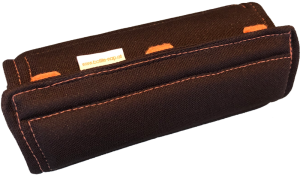Looking at the balance sheet and its components helps them keep track of important payments and how much cash is available on hand to pay these vendors. Balance sheets are typically prepared at the end of set periods (e.g., annually, every quarter). Public companies are required to have a periodic financial statement available to the public. On the other hand, private companies do not need to appeal to shareholders. That is why there is no need to have their financial statements published to the public. In this example, Apple’s total assets of $323.8 billion is segregated towards the top of the report.
Often, the reporting date will be the final day of the reporting period. Companies that report annually, like Tesla, often use December 31st as their reporting date, though they can choose any date. Below is an example of a balance sheet of Tesla for 2021 taken from the U.S.
A balance sheet explains the financial position of a company at a specific point in time. As opposed to an income statement which reports financial information over a period of time, a balance sheet is used to determine the health of a company on a specific day. A balance sheet is a financial statement that communicates the “book value” of an organization, as calculated by subtracting all of the company’s liabilities and shareholder equity from its total assets.
Balance Sheets are Static
With a firm understanding of the balance sheet basics, you can use this report to guide financial decision-making in your business. Although it takes time and effort to create an accurate balance sheet from scratch, it is a vital report you as a business owner should have. We accept payments via credit card, wire transfer, Western Union, and (when available) bank loan.
- The common stock and preferred stock accounts are calculated by multiplying the par value by the number of shares issued.
- You also don’t include current assets that are harder to liquidate, like inventory.
- Retained earnings are the net earnings a company either reinvests in the business or uses to pay off debt.
- On the other hand, long-term liabilities are long-term debts like interest and bonds, pension funds and deferred tax liability.
- For example, accounts receivable must be continually assessed for impairment and adjusted to reflect potential uncollectible accounts.
Explore our online finance and accounting courses, which can teach you the key financial concepts you need to understand business performance and potential. To get a jumpstart on building your financial literacy, consignor and consignee download our free Financial Terms Cheat Sheet. The information found in a company’s balance sheet is among some of the most important for a business leader, regulator, or potential investor to understand. While an asset is something a company owns, a liability is something it owes.
Submit to get your retirement-readiness report.
Balance sheets are important because they give a picture of your company’s financial standing. Before getting a business loan or meeting with potential investors, a company has to provide an up-to-date balance sheet. A potential investor or loan provider wants to see that the company is able to keep payments on time. The balance sheet previews the total assets, liabilities, and shareholders’ equity of a company on a specific date, referred to as the reporting date. A balance sheet is a financial statement that shows the relationship between assets, liabilities, and shareholders’ equity of a company at a specific point in time. Employees usually prefer knowing their jobs are secure and that the company they are working for is in good health.
Our easy online enrollment form is free, and no special documentation is required. All participants must be at least 18 years of age, proficient in English, and committed to learning and engaging with fellow participants throughout the program. The balance sheet is a report that gives a basic snapshot of the company’s finances. This is an important document for potential investors and loan providers. The auditor of the company then subjects balance sheets to an audit. Balance sheets of small privately-held businesses might be prepared by the owner of the company or its bookkeeper.
The Balance Sheet Format
Balance sheets are used to determine if a company can meet its debt obligations, while income statements gauge profitability. Because the balance sheet reflects every transaction since your company started, it reveals your business’s overall financial health. At a glance, you’ll know exactly how much money you’ve put in, or how much debt you’ve accumulated. Or you might compare current assets to current liabilities to make sure you’re able to meet upcoming payments. The balance sheet includes information about a company’s assets and liabilities. Depending on the company, this might include short-term assets, such as cash and accounts receivable, or long-term assets such as property, plant, and equipment (PP&E).
The Language of Business
These financial statements are also key for calculating rates of return for your investors and for evaluating the capital structure of your business, both of which are essential processes. Because companies invest in assets to fulfill their mission, you must develop an intuitive understanding of what they are. Without this knowledge, it can be challenging to understand the balance sheet and other financial documents that speak to a company’s health. Whether you’re a business owner, employee, or investor, understanding how to read and understand the information in a balance topic no 705 installment sales sheet is an essential financial accounting skill to have.
Shareholders’ equity refers generally to the net worth of a company, and reflects the amount of money that would be left over if all assets were sold and liabilities paid. Shareholders’ equity belongs to the shareholders, whether they’re private or public owners. This may refer to payroll expenses, rent and utility payments, debt payments, money owed to suppliers, taxes, or bonds payable. Have you found yourself in the position of needing to prepare a balance sheet? Here’s what you need to know to understand how balance sheets work and what makes them a business fundamental, as well as steps you can take to create a basic balance sheet for your organization. Looking for an even simpler way to create balance sheets that support your business?



